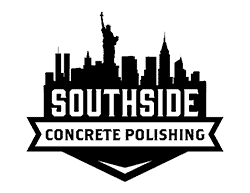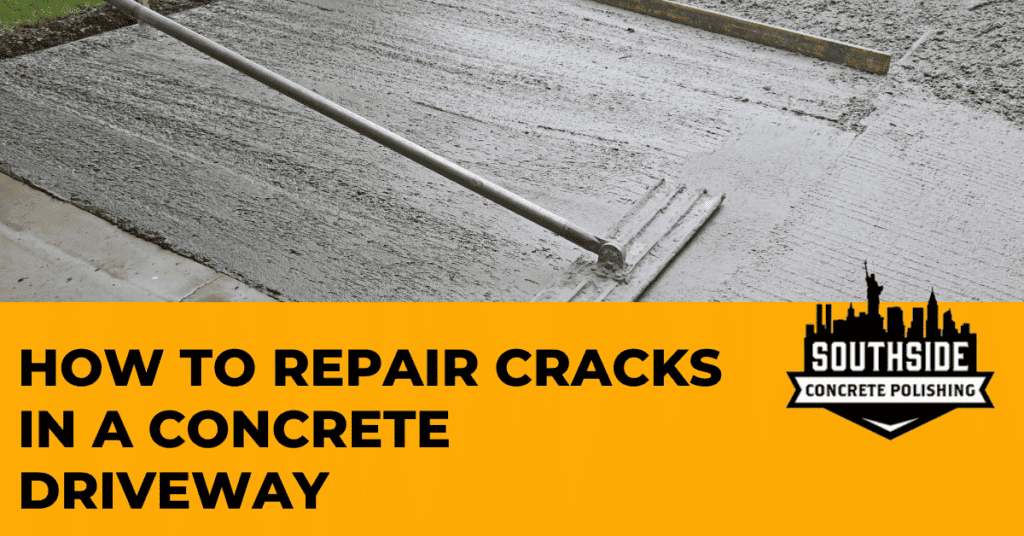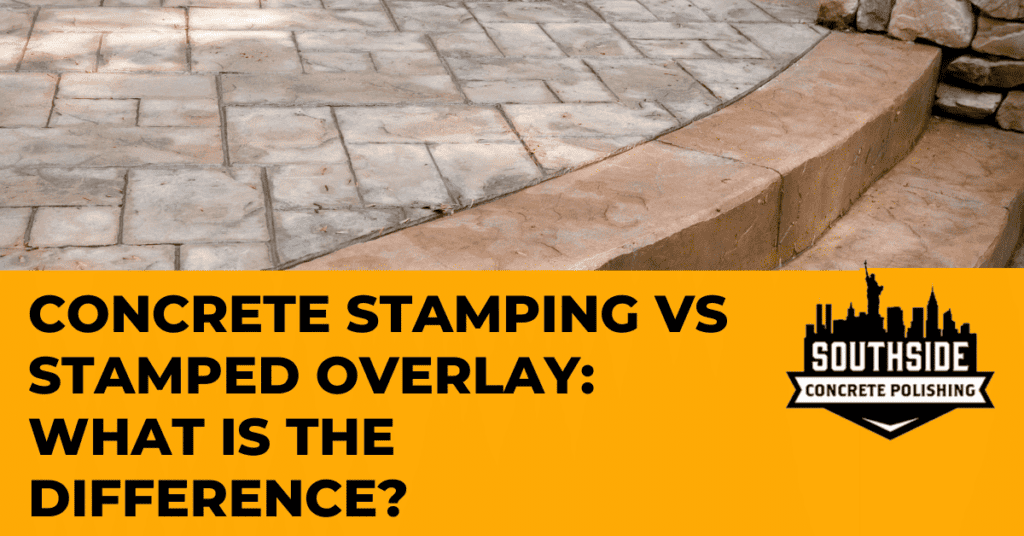Concrete engraving is a transformative process that elevates plain concrete surfaces into stunning works of art. It involves etching patterns and designs into existing concrete using specialized tools and equipment. Unlike surface treatments like overlays or toppings, engraving creates permanent designs by carving directly into the concrete.
The benefits of concrete engraving are manifold. Not only does it enhance the aesthetic appeal of concrete surfaces, but it also adds depth, texture, and character to otherwise plain areas. Additionally, it provides a cost-effective solution compared to brick or tiles for upgrading existing concrete surfaces without requiring complete replacement.
Concrete engraving involves several key steps, from surface preparation to concrete staining and engraving patterns using special to final sealing of engraved concrete floor.
What is Concrete Engraving?
Concrete engraving is the process of remodeling cured concrete by cutting patterns and textures directly into the surface. It uses precision tools to create intricate designs and graphics that simulate various building materials or custom patterns. Engraving adds depth and dimension to concrete surfaces, enhancing their aesthetic appeal.
Methods for Concrete Engraving
Concrete engraving is achieved through several techniques, including:
Hand Engraving
This method involves using handheld tools to carve out designs manually. It offers greater flexibility for detailed patterns but is more time-consuming.
Machine Engraving
Machine-based engraving utilizes specialized equipment to automate the process, ensuring precision and efficiency. It’s ideal for large-scale projects or repetitive designs.
Stencil Engraving
Stencil-based engraving involves placing pre-cut design templates or stencils on the concrete floor and then etching the desired pattern using a router or engraving machine. It allows for consistent results and precise detailing.
Where is Concrete Engraving Used?
Concrete engraving can be used in a variety of settings, both indoors and outdoors. Here are some common applications:
Driveways
Engraved driveways add curb appeal and character to residential properties while providing a durable, long-lasting surface.
Walkways
Engraved walkways create inviting paths that guide visitors through gardens, parks, or commercial landscapes.
Patios
Engraved patios offer a unique outdoor living space for entertaining or relaxation, with customized designs that reflect personal style.
Pool Decks
Engraved pool decks enhance the poolside experience with decorative patterns and textures that complement the surrounding environment.
Commercial Floors
Engraved concrete floors are popular in retail stores, restaurants, and office buildings. They create a visually appealing ambiance and withstand heavy foot traffic.
Retail Spaces
Concrete surfaces showcase branding elements, logos, or promotional messages in retail environments, attracting customers and reinforcing brand identity.
Theme Parks
Engraved concrete is often used in theme park attractions and outdoor venues to create themed pathways, interactive exhibits, and immersive environments.
What are the Benefits of Concrete Engraving?
Concrete engraving offers numerous benefits, making it a preferred choice for decorative concrete applications:
Enhanced Aesthetics
One of the primary benefits of concrete engraving is its ability to transform ordinary concrete surfaces into visually stunning works of art. Engraved patterns add depth, texture, and character, elevating the overall aesthetic appeal of any space.
Durability
Engraved concrete is not only visually striking but also highly durable. The engraved patterns are permanent and won’t disappear over time, ensuring long-lasting beauty and functionality.
Versatility
Concrete engraving offers unparalleled versatility in design options. From intricate geometric patterns to realistic simulations of natural materials, the design possibilities are endless, allowing customization to suit any aesthetic preference or architectural style.
Cost-Effectiveness
Concrete engraving offers a cost-effective solution compared to alternative decorative treatments, such as installing natural stone, brick, or tile. It provides the look and feel of expensive materials at a fraction of the cost, making it an attractive option for budget-conscious homeowners and businesses.
Low Maintenance
Maintaining engraved concrete surfaces is relatively straightforward and requires minimal upkeep. Routine cleaning and periodic resealing are needed to preserve the beauty and longevity of the engraved patterns, making them a hassle-free choice for busy homeowners and property managers.
How to Do Concrete Engraving?
Concrete engraving involves several steps, each essential for achieving optimal results:
Step 1: Surface Preparation
Thorough surface preparation is essential before starting the concrete engraving process. It involves meticulously cleaning the concrete floor to remove dirt, debris, or contaminants. Additionally, repairing cracks or imperfections is crucial to ensure smooth engraving.
Step 2: Staining
Once the surface is prepped and primed, the next step is staining. Concrete stain is applied to add color and depth to the surface, enhancing the overall aesthetic appeal of the engraved patterns. Stains penetrate the concrete, creating rich, translucent hues complementing engraved designs.
Step 3: Engraving
The heart of the process lies in the engraving itself. Specialized engraving tools, equipped with diamond-tipped blades or bits, are used to carve out the desired patterns or designs directly onto the concrete. This step requires precision and attention to detail to achieve the desired results.
Step 4: Sealing
Sealing is essential to preserve the engraved concrete’s beauty and longevity. A protective sealer is applied to the surface to enhance its appearance and durability, safeguarding it against wear and tear from foot traffic, weather elements, and other environmental factors.
What Tools Are Needed to Do Concrete Engraving?
The concrete engraving tools needed to perform the desired task vary depending on the chosen technique and the project’s complexity. However, some essential concrete engraver tools and equipment include:
Engraving Machine
A precision concrete engraver machine or router is essential for creating intricate designs and patterns on the concrete surface.
Diamond-Tipped Blades or Bits
Diamond-tipped blades or bits are useful concrete engraver tools that cut through the concrete precisely, ensuring clean and crisp engraving lines.
Templates
Pre-cut templates or stencils are vital concrete engraving tools for consistent patterns and designs, especially for repetitive motifs or logo engraving.
Surface Preparation Tools
Tools such as pressure washers, grinders, and concrete repair products are necessary for cleaning, repairing, and preparing the concrete surface before engraving.
Protective Gear
Safety glasses, respirators, and gloves are essential for protecting against dust, debris, and chemical exposure during the engraving process.
Engraved Concrete Maintenance
Maintaining engraved concrete surfaces is essential to ensure their long-term beauty and durability. Here are some maintenance tips to keep in mind:
Routine Cleaning
Regularly clean the engraved concrete surface to remove dirt, debris, and stains. Use a mild detergent, water solution, and soft-bristle brush or mop to scrub the surface gently.
Periodic Resealing
Periodically reseal the engraved concrete surface to protect it from wear and tear. Choose a high-quality concrete sealer appropriate for the specific conditions and environment, and follow the manufacturer’s instructions for application.
Avoid Harsh Chemicals
Avoid using harsh chemicals or abrasive cleaners on engraved concrete surfaces, as they damage the sealant and the engraved patterns. Instead, use gentle, pH-neutral cleaning solutions to maintain the surface’s integrity.
Can concrete engraving be done on vertical surfaces?
Yes, concrete engraving can be performed on both horizontal and vertical surfaces. While it’s commonly used on floors, driveways, and patios, it can also be applied to vertical surfaces such as walls, retaining walls, and facades to create unique decorative effects.
Is concrete engraving suitable for high-traffic areas?
Yes, concrete engraving is highly durable and can withstand heavy foot traffic, making it suitable for high-traffic areas like sidewalks, shopping malls, and commercial floors. Proper sealing and maintenance can further enhance its longevity and resilience.
Can intricate designs and detailed graphics be engraved on concrete surfaces?
Using advanced engraving techniques, stencils, and precision tools, intricate designs and detailed graphics can be engraved onto concrete.
Will engraved concrete surfaces require resealing over time?
Engraved concrete requires periodic resealing to maintain its appearance and durability. Resealing helps protect the surface from stains, moisture, and wear, ensuring the engraved patterns remain vibrant and intact for years.
Can concrete engraving be combined with other decorative techniques?
Concrete engraving can be combined with various decorative techniques, such as staining, stamping, and scoring, to achieve customized effects.
Share This Post




